
|

|
|
Home Site Search Contact Us Subscribe
|
|
|
One-on-One: Architecture is not exactly global: Interview with Orlando Garcia The Colombian architect talks about how good architecture and urban design can reach the greatest number of ordinary people. By Vladimir Belogolovsky December 20, 2013 Critics often complain about the dominance of global architecture – a certain international style, which is indifferent to specificity of a place; they have been desperately searching for unique regional solutions in architecture. Today’s Colombia is a real “goldmine” for such imaginative discoveries. Since the 1990s this nation has been going through a remarkable political and social transformation, and many of its cities, particularly Bogotá and Medellín, consistently surprise the world with a number of creative projects. What is unique here is that original architecture is emerging predominantly to serve the poor in the poorest neighborhoods.
This phenomenon is unheard of in the developed world, where high-quality progressive architecture is almost exclusively done for the elite and the tourists; the poor and even the middle class rarely come in contact with architecture of quality.
How is it possible for good architecture and urban design to reach the greatest number of ordinary people? What can be learned from the Colombian experience? I discussed these issues with Colombian architect Orlando Garcia, who now has his practice in New York City and has experience working in both countries. The architect invited me to his busy studio in Brooklyn.
Garcia was born in Medellín in 1975. He graduated from School of Architecture at Universidad Pontificia Bolivariana in Medellín in 1999. He has lived in New York since 2001, and worked at the offices of designer Naomi Leff and Scarano & Associates Architects until 2006, when he co-founded studio G Ateliers with another Colombian architect, Hernan Galvis. The practice was very busy designing multifamily residential projects in Brooklyn and Manhattan – until 2008, when about a dozen projects in construction were suddenly stopped by the economic crisis. With having almost no work Garcia entered – and won – an international competition for the Fernando Botero Park Library on the outskirts of Medellín. A bold but well-fitting edifice was built the following year and published internationally. The library’s original drawings and models were recently shown at the Center for Architecture in New York as part of the “Colombia: Transformed / Architecture = Politics” traveling exhibition, which I organized and curated with architect Fernando Villa; the exhibition is currently on view through January 10, 2014, at AIA Houston’s Architecture Center Houston.
Vladimir Belogolovsky: You grew up in Medellín in very rough and violent times. What are your memories of that era?
Orlando Garcia: Well, in the early 1990s, when I was 15-16 years old, I remember thinking that I was not going to make it. The times then were very violent. We used to live in a middle-class neighborhood, but it was an area very close to a lot of violence. To me, it was a happy time, as it was my childhood, but it was the dark era when we lived in Pablo Escobar’s shadow. Still, there was always hope that my family and I. Well, that we were going to make it. Many of my school friends and neighbors did not make it. Many of them are no longer with us. I was lucky enough not to get involved in gangs. Of course, I owe it to my parents and my education.
VB: How did architecture come into the picture?
OG: My father is a contractor, so architecture came naturally. I always liked building models and drawing. But my real dream was to be a pilot. I still like thinking about it. That was a real passion of mine. I applied to both schools. I was already an architecture student wondering if my test results were high enough to get into the air force. That was not meant to be due to some health issues.
VB: What do you think about Medellín’s Mayor Sergio Fajardo’s initiative to change the city by building the most beautiful buildings in the poorest neighborhoods?
OG: The legend has it that it was Fajardo who started the whole process of the renewal in Medellín, but it was not the effort of just one person. It was the city and many people. It was a very difficult moment and the people were tired of traditional politics, violence, and so on. There was a master plan which started slowly. Then local energy giant Empresas Públicas de Medellín (EPM), one of the wealthiest companies in South America, decided to get involved with the development of the master plan. To this day this is where most of the money comes from to finance public projects in the city.
Their first step was to involve the school of architecture at my university to be a sort of a laboratory for urban renewal, and to start seriously thinking about ways to execute parts of that overall master plan for Medellín. This was in late-90s, when I was a student. The project was very successful. It became a true catalyst for urban renewal, and a good model for projects that followed. At first, there were public parks, libraries, schools, and it was then when the first cable car was built (what a crazy idea, but it worked!). It was only then that Fajardo was elected mayor. What he should be credited for is his initiative to organize architectural competitions to develop the best ideas for urban projects. He was for sure the key player, but not the first and not the only one.
VB: How did you come to the U.S.?
OG: Right after graduation I worked for EPM, the energy company, at my university on Parque de los pies Decalzos, which was the company’s first intervention in the urban scene. Then work dried up in 2001 due to a financial crisis. It was the perfect time to travel and see other places. I was 25 and I’d never been to Europe. But first I went to the U.S., as my relatives lived in Miami. I particularly wanted to see New York. Coming here was shocking. That visit changed my plans. I stayed longer, so my trip to Europe had to wait for several more years.
VB: You have a passion for drawing and you produce many handmade drawings, which is rare nowadays. Why bother if everything can be done on computers now? Does it reflect on the quality of your architecture?
OG: I believe there is a very strong connection between brain and hand. There is a direct link. What you put on paper is a direct reflection of the thinking process in real time. There is no delay. To me it is more natural to search for a solution by drawing by hand. Call it ideas, inspirations, dreams. all these things come to me when I draw. To me, this is more efficient than doing drawings on a computer. Drawing by hand gives me more control over my thoughts. Computers come much later, when the original ideas crystalize and you need to translate original poetic ideas into something concrete and accurate. The computer helps to bring ideas into reality, that’s all.
VB: Let’s talk about your library, which is named after your famous countryman, sculptor Fernando Botero.
OG: I should mention that at the library’s opening I didn’t have a seat in the theater where the ceremony was taking place, and I was not even mentioned as the architect.
VB: It was about the library, not who designed it. It was about what the building could offer to the community, right?
OG: And about the mayor.
VB: Politics. What about the color of the building? Why black? Why is it such a dominating color in your work?
OG: Well, we are open to other colors. In this case we discovered that there is a brick factory nearby and for a while we contemplated using local brick, which is very common there. In fact, all back and side façades of almost every house are built out of this brick, so if we were to use the same brick for our project we would be honoring these façades. The fronts of these houses are typically made of painted stucco. In any event, brick would disappear here. It would be a perfect camouflage, in a way. But it is not about camouflage. It is about dialogue. So we wanted to find a finished material. We visited some of the recently built libraries in the city, and people pointed out to us that many beautifully designed buildings with concrete or stone façades are covered with graffiti and are difficult and expensive to maintain. If you provide a blank surface in these neighborhoods they will be painted. So the building’s color is conditioned by these practical considerations.
My buildings are all made of different materials, but you are right – the color is consistently black. When we were choosing brick for one of the buildings, we considered all kinds of colors, but by method of elimination we chose black. Personally, I love concrete, but to use poured concrete in New York is very expensive. Glass and metal panels are also very expensive. Brick is usually much more affordable, but every time I start choosing brick that I like, it is typically black. When clients can’t afford even brick, we use stucco. But in most colors stucco looks very cheap; not so in black. In black it is very elegant and easy to maintain.
VB: Could you comment on the difference between working here and in Colombia? What do you bring to New York as a Colombian architect?
OG: One obvious advantage in Colombia is a warmer climate that allows more freedom for architects to express themselves. Also in Colombia, we don’t have a lot of resources and we learned to build creatively and economically. This led to a lot of original projects. But since the crisis, I think we are all in the same boat. We need to be creative with the resources we have.
The biggest advantage I have is my natural desire to achieve maximum effect with minimum means. Being resourceful, creative, efficient. I think this is what I am best at, and this is what I bring to New York. For example, right now I am working on three condominium buildings that happen to be very close to each other, so I proposed to connect their backyards into one communal garden for all residents to enjoy. This will create not only a beautiful space, but also a wonderful sense of community. This is what improves the quality of life. As an architect I saw an opportunity to do this and I went ahead and did it.
VB: I would like to ask you a tough question. Don’t you find it ironic that in New York we are inspired by such works as your library, as well as original schools, kindergartens, and other social projects – we try to learn from your experience; and when you, a Colombian architect, come to New York you turn to serving the upper middle class. Here in New York, we also need new social projects. We have plenty of underserved neighborhoods where good architecture and urban design could improve the social climate and even improve criminal situations. Beauty is a powerful thing. It worked in Colombia. Why not try it here? Is it hard to find opportunities here to work on social projects?
OG: Well, I have to tell you that it is not only because of the architects that so many wonderful social projects were built in Colombia. They were not initiated by architects. The changes we’ve been discussing happened in Colombia from the top down. Architecture and urban design were used as tools by new politicians. They initiated competitions. Architects responded very creatively and willingly, but they could not address these issues had they not been asked to do so. It is politicians and developers who have the power to make projects happen; all we do is to propose them. There were so many things that came together. There were so many poor people; they were tired and frustrated with their misery for so long. It was such a crucial point. Everyone was in sync and it worked. But to go back to your question – why don’t I work on social projects in New York... Sure, I would love to. But how do I find these projects? Where do I look for such the clients?
VB: So architecture is not exactly global?
OG: Well, the reality is that architecture is not always global, after all. What works in one place may not work elsewhere. What worked in Bilbao was very appealing, but investing a lot of money in one cultural institution was not very successful in other places. What worked in Medellín may not work in other cities. Even if we zoom in on Colombia you’ll see there is a difference between Medellín and Bogotá. There is a cultural difference. Medellín is much less formal and people are prepared to take greater risks. There is less talk and more action. For example, Medellín is many times smaller than Bogotá, but we knew we needed a metro and we just went ahead and did it. Now we have one of the most successful and cleanest metro systems in the world. Yet in Bogotá they are still planning and debating. So a particular project or idea, no matter how attractive, may work in one place and not in another. For example, a cable car works great in Medellín, but cities in Venezuela and Brazil with similar terrain and demographics tried it and for some reasons that did not work. So it is important to be aware of these projects, but every community needs to find its own solution. New York should find its own solution as well, because problems here are very different.
VB: When I look at your drawings I recognize your distinct hand. Is this intentional and are you trying to develop your formal artistic language? Do you have your own agenda in architecture which you would want to address formally?
OG: It is good that you can recognize a certain hand, but this is not intentional on my part. Every project comes with unique circumstances and I always start with those. You do architecture in the present, which addresses the future and belongs to the past.
Vladimir Belogolovsky, founder of the New York City-based Intercontinental Curatorial Project, curates architectural exhibitions worldwide. Trained as an architect at Cooper Union, he is the author of the books Felix Novikov, Green House, Soviet Modernism: 1955-1985, and Harry Seidler (Rizzoli, 2014). His “Harry Seidler: Architecture, Art and Collaborative Design” exhibition is traveling Europe, North America, South America, and Australia from 2012 to 2015. vbelogolovsky@gmail.com
More by Belogolovsky
One-on-One:
Revolution in Architecture: Interview with Gregg Pasquarelli, SHoP Architects
"Harry Seidler: Architecture, Art and Collaborative Design" A new traveling exhibition celebrates the 90th anniversary of the birth of Harry Seidler, the leading Australian architect of the 20th century who followed his convictions and vision.
Colombia: Transformed / Architecture = Politics The curators of the exhibition making its world debut in Chicago this week throw the spotlight on five Colombian architects who leverage brick, concrete, and glass forms to improve the lives of ordinary people.
One-on-One: We architects are politicians: Interview with Giancarlo Mazzanti "Now is the time to think of how architecture can change the world. We architects can assume that role and make a real difference in how people live and behave."
One-on-One: Architecture that leads to a point: Interview with Daniel Libeskind "Every building, every city should have a story."
One-on-One: Architecture of Emotion and Place: Interview with Bartholomew Voorsanger, FAIA, MAIBC The architect's aspiration to create expressive, dynamic spaces is absolutely the key to his work.
One-on-One: Architecture as a Social Instrument: Interview with Bjarke Ingels of BIG It is not for nothing that this young architect is referred to as the "Yes Man" with a willingness - and ability - to please just about everyone.
One-on-One: Putting Colors Together: An Interview with Will Alsop For Alsop, it is the act of painting, the state of losing control - its imprecision and intuitiveness - that best define his initial vague intentions - and what ultimately brings him close to the mystery of inventing new architecture.
One-on-One: The Art of Ennobling Communities: Interview with Sara Caples and Everardo Jefferson These architects have proven time and time again that architecture can transform reality and change attitudes.
One on One: Elusive Architecture: Interview with Kengo Kuma "I want to create a condition that is as vague and ambiguous as drifting particles. The closest thing to such a condition is a rainbow."
|
(click on pictures to enlarge)  ©Orlando Garcia Fernando Botero Library Park façade study, Medellín, Colombia, 2011 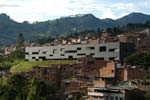 ©Orlando Garcia Fernando Botero Library Park 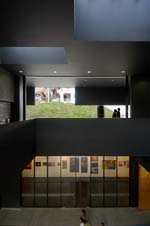 ©Orlando Garcia Fernando Botero Library Park interior 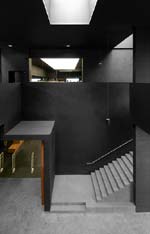 ©Orlando Garcia Fernando Botero Library Park interior 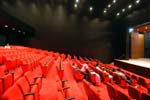 ©Orlando Garcia Fernando Botero Library Park theater  ©Orlando Garcia 60 Orchard Street Condominium, Manhattan, 2010 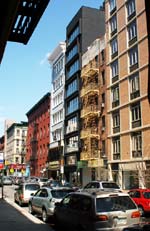 ©Orlando Garcia 60 Orchard Street Condominium 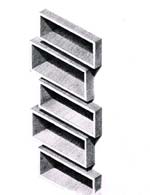 ©Orlando Garcia 60 Orchard Street Condominium façade study 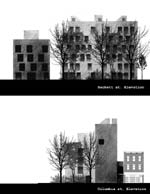 ©Orlando Garcia 138 Sackett Street Condominiums, Brooklyn, New York, 2013-14 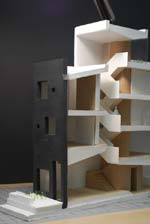 ©Orlando Garcia Carroll Street Row houses model, Brooklyn, New York, 2013-15 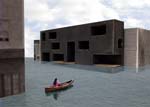 ©Orlando Garcia Shone Residence, Red Hook, Brooklyn, , New York, 2013-14  ©Orlando Garcia Román House, Medellín, Colombia, 2008 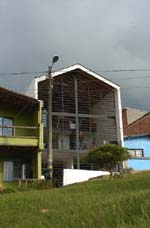 ©Orlando Garcia Román House 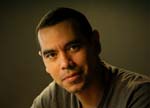 Courtesy Orlando Garcia Architect Orlando Garcia |
© 2013 ArchNewsNow.com